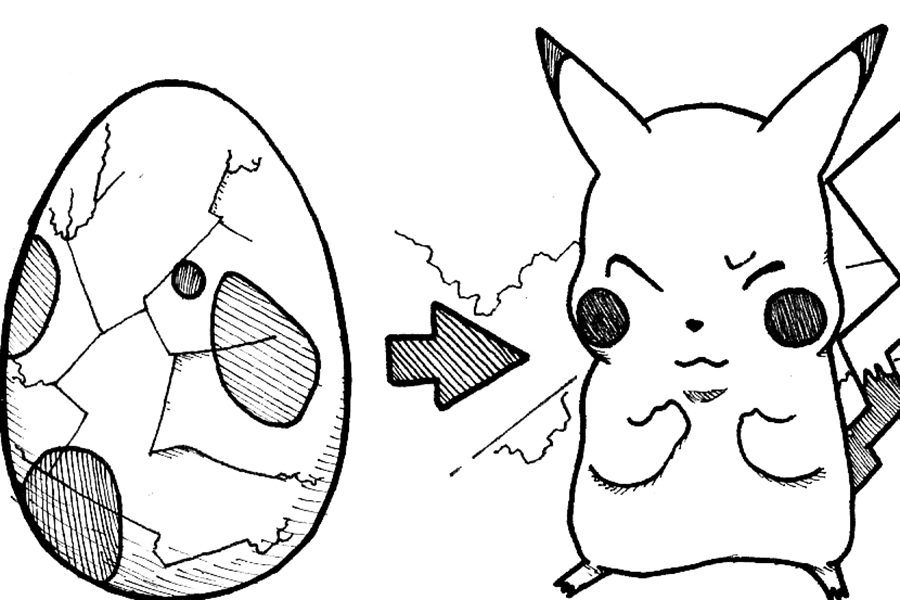Pokémon Go links classic game, modern technology
Aug 26, 2016
Around the world Poké fiends and casual players alike have joined forces to make Niantic’s “Pokémon Go” app the most popular new game of 2016.
The platform unites the virtual with actual reality, using Google maps and your phone’s geo location to highlight landmarks and places of interest that house poke stops (a virtual totem pole used to re-supply in-game items) and gyms (a virtual arena used to train captured Pokémon).
Both are essential to advancing in the game.
The experience is like a never-ending scavenger hunt where players pursue cyber-critters using an animated map that is an overlay of the user’s actual location.
As the varmints reveal themselves, signified by a tone and vibration, poké balls (collected from poké stops) are flicked onto the monsters capturing them inside of the ball to be trained and fought at a gym.
Game enthusiasts peddle the need to explore their surroundings to be successful at the game.
Walking is essential to advancement as the more a user travels, the more varied the types of animals are that can be collected. Special eggs that hatch Pokémon can be collected, but hatching requires walking 2.0 km, 5.0 km or 10.0 km — the larger the number, the more powerful the entity is that will be hatched.
In perspective, 2.0 km equals 1.24 miles or 2,670 steps, 5.0 km is 3.11 miles or 6,670 steps and 10.0 km is 6.21 miles or 13,300 steps.
The average human step is 29.5 inch per stride at 3 miles per hour.
Urging users to traverse urban and rural surroundings and encouraging congregation at public landmarks is part of the game’s appeal.
Places of recognition like murals, statues, churches and schools are often places designated as poké stops where gamers can place “lures,” or virtual chum, which attract creatures and other players.
Six poké stops have been here on campus (the largest collection of nearby stops is in the Hilltop-Fairmede neighborhood surrounding the college) since the beginning of summer.
“Over the summer there was this professional looking couple in a Z4 BMW sitting in Lot 14 with a baby. It was getting late so I went to check on them,” police aide Jag Jot Saggar said. “They asked if it was OK if they sit there for 30 minutes.”
In a convertible — at night — with a baby in the car — to play Pokémon.
“In the summer there was more activity here, more lures and more people playing,” psychology major Stacy Fernandez said. “Now that school has started things have kind of dried up.”
Items like lures draw more than just critters. Criminals find potential victims wandering aimlessly, face-in-phone, oblivious to potential dangers that lie in wait.
Tragic situations have already occurred, like the San Joaquin Delta College baseball player who was killed playing Pokémon in San Francisco’s Ghirardelli Square in what police officials believe was a snatch-and-run style robbery Aug. 6.
Campus police aide Kavi Singh said, “It’s the lack of awareness that’s bad. People are stepping into traffic without looking. It’s not worth your life. I don’t play the game personally, but people are getting robbed or murdered. Anything can happen.”
Getting out in the world is not only leading to bad encounters. In San Pablo, the public library also moonlights as a poke stop.
“We have more people, kids and families coming into the library but not that much of an increase,” San Pablo youth services librarian Michelle Ramos said. “Adding one more reader is better than none.”
The game is not without pessimists. Many believe the company oversteps its boundaries with its data-mining capabilities and willingness to share collected information with unlisted third party entities.
Niantic Labs, the company behind the “Pokémon Go” app, is currently being threatened by the Federation of German Consumer Organizations over 15 terms in its user agreement that are not in line with German consumer protection laws.
They cite the ability of Niantic to pass information to third parties, change the policy or terminate an account without user knowledge or consent as points.
Pokémon™ is a media franchise managed by The Pokémon Company, an alliance of three Japanese companies — Nintendo, Game Freak and Creatures.
It is not just the lifelong users who are volunteering their digital palm print to the world. The app now has more users than Tinder or Twitter.
“I never even watched Pokémon, but I just wanted to try it one day and got addicted,” liberal arts transfer student James Eggleston, from North Carolina, said. “There are more poke stops here than in North Carolina, but most of what I catch is the same old thing.”



